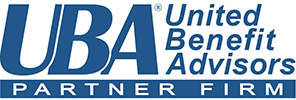 One thing rings true when it comes to the Affordable Care Act (ACA): “expect the unexpected.” I know this sounds cliché, but it was my best attempt to describe the experience HR professionals encounter as they attempt to comply with this somewhat murky piece of legislation. Last year on December 28, we were alerted a month from the approaching deadline that the forms and filing requirements had moved two and three months out to address challenges. This was a fairly drastic move within a month of a significant compliance deadline.
One thing rings true when it comes to the Affordable Care Act (ACA): “expect the unexpected.” I know this sounds cliché, but it was my best attempt to describe the experience HR professionals encounter as they attempt to comply with this somewhat murky piece of legislation. Last year on December 28, we were alerted a month from the approaching deadline that the forms and filing requirements had moved two and three months out to address challenges. This was a fairly drastic move within a month of a significant compliance deadline.
As a leading provider of ACA solutions to hundreds of employers, we are finding this concern about uncertainty spills into the 2016 tax season. To provide some useful guidance, I thought it would be helpful to share with you a roll-up of common questions and key issues we are receiving from our clients over the past several months:
- Will the ACA be delayed again in 2016? We do not see the filing requirements delayed again in 2016. The delay for 2015 was a one-time delay, and the IRS has signaled this to be the case on their conference calls.
- What changes do we need to be concerned with in the 1094-C and 1095-C forms? Overall, the changes to these forms are minor in 2016. The 2015 Qualifying Offer, a form of transition relief, was eliminated from the 1094 form. The biggest changes are with two contingent offer of coverage codes 1J and 1K. The idea behind these new offer codes is that employer coverage is contingent upon not having coverage available elsewhere. If this better describes how you offer coverage, you may want to consider selecting these codes over the traditional 1A or 1E.
- Will it be easier to work with name/TIN mismatches flagged through the corrections process? In the first year it was difficult to work with IRS requested corrections because you often could not identify which covered individual generated the error (we didn’t know if it was the employee, a dependent, or both). Several IRS conference calls have signaled they will be providing more detail on the corrections this year. If your ACA solution communicates with the IRS Affordable Care Act Information Returns (AIR) system, you will likely be able to display the detail of this error message and act on it. A side-note: remaining corrections from 2015 do not have a specific due date, but should be addressed as soon as possible.
- Why do we still have transition relief in 2016? The expectations for many is that transition relief was simply a 2015 phenomenon. While non-calendar year and 2015 Qualifying Offer Transition Relief have been eliminated, 4980H Transition Relief has remained into 2016 for “non-calendar” plans that meet certain criteria. This means that employers who might be facing shared responsibility penalties in 2016 can still take advantage of one of the two types of relief: 1) if you average 50 to 99 FTEs you are shielded for the 2015 non-calendar year plan for the months that spill into 2016 (e.g., a July 1 plan will be shielded for the first six months of 2016), or 2) the same applies for 100+ clients in terms of being able to leverage the 70 percent offer requirement.
- Will it be easier this year? This is a general question that depends on the solution you use. Overall, we believe the answer is a resounding “YES!” With our solution, a large number of clients are able to take advantage of an automated renewal process that transitions setup from 2015 and trends existing employees from December 31, 2015, into 2016. Vendors have learned how to make this process easier for their customers after all the pain they experienced in 2015. Everything from data collection, filing and corrections process should be more automated this year.
Originally published by United Benefit Advisors – Read More

